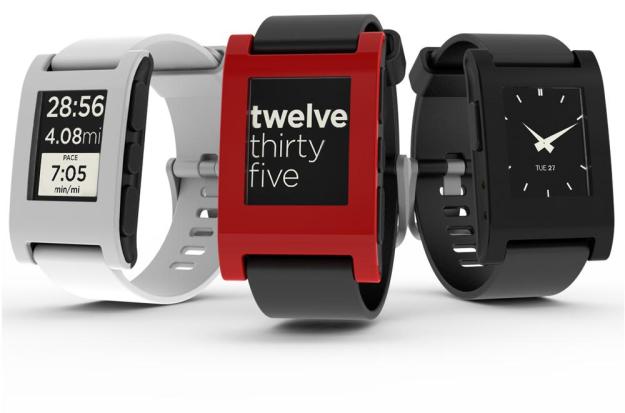 Best Buy started selling the Pebble smartwatch at its brick-and-mortar stores and online this week as the company behind the device makes moves to take it mainstream.
Best Buy started selling the Pebble smartwatch at its brick-and-mortar stores and online this week as the company behind the device makes moves to take it mainstream.
Reports late last week suggested Best Buy was about to become the first retail chain to stock the app-enabled, programmable gadget, and on Sunday the Pebble team confirmed the move in a statement.
Pebble CEO Eric Migicovsky said demand for the high-tech watch is high, and that “Best Buy’s partnership with us is a big step towards meeting that demand.”
But if you thought picking up a Pebble from the retail giant would be an easy way to avoid having to wait till the summer (the current shipping date if ordered from Pebble’s website), you might want to call ahead to check it’s in stock. The $150 smartwatch is, at the time of writing, showing up at bestbuy.com/pebble with sold out notices for those wishing to order online.
Some of those who’ve managed to get their hands on a Pebble from the retail giant have been quick to post reviews on the store’s website, ranging from a five-star “awesome companion to my S4” to a one-star “DOA out of the box”. Blank or fading screens appear to be the cause of several of the negative reviews.
Best Buy is only stocking the black Pebble for the time being. The cherry red Pebbles should arrive in August, while the three other colors – orange, gray, and Arctic white – are available for pre-order at getpebble.com.
The customizable Bluetooth watch caught the imagination of the Kickstarter community last year, earning over $10.2 million from more than 68,000 backers.
Wearable tech is predicted to be the next big thing for the tech world, with – if reports are to be believed – wrist-based gadgetry currently the focus of many of the big companies.
Samsung, Apple and Google, for example, are all thought to be in the midst of building smartwatches, while Sony already has one on the market, the second iteration of which is set to launch in September. If Pebble can get its factory to pump out more of its watches to keep up with demand, the tie-up with Best Buy could prove to have been an astute move by Migicovsky as he attempts to gain a foothold in the market before the big hitters arrive on the scene with their huge marketing budgets.


